by Bonnie Swarbrick
A lot has been happening at Buenos Aires NWR since our last newsletter of September 2021. The Friends are actively pursuing projects both indoors and outdoors, particularly in response to habitat improvement and wildlife viewing opportunities. If you are not a member and would like to join, please see the last section of this newsletter. We would love to have you join our team!
About Us
The Friends is a group of citizens dedicated to preserving and perpetuating the wildlife and wild lands that are part of Buenos Aires National Wildlife Refuge. We welcome you to the world of semi-desert grasslands, sky island mountains, and desert waterways.
As volunteers, we work to enhance public awareness and understanding of the Refuge’s natural history and ecology. We work in harmony with the Refuge to provide the greatest benefit for the present and help assure the legacy of Buenos Aires National Wildlife Refuge in perpetuity.
The Friends were founded in 1996 and provide a wide variety of programs and services to the Refuge and the public. We have offered educational classes such as photography and wildlife identification. Some classes were overnight and the participants stayed in the Environmental Education Center in Brown Canyon.
Friends of Buenos Aires National Wildlife Refuge is a non-profit, 501(c)3 organization that supports Buenos Aires National Wildlife Refuge. We assist the Refuge in restoring and protecting native Sonoran habitats and wildlife and in providing wildlife-oriented education and recreation. We seek out and acquire funding for both environmental conservation activities and wildlife conservation activities that are identified by Refuge management as part of their mission.
Refuge Volunteers
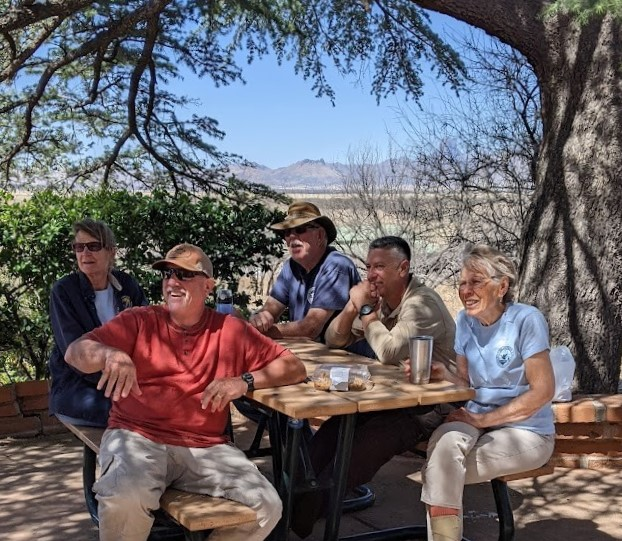
In this time of budget shortfalls and short-handed staff, not only are efforts by the Friends important but so are the contributions of seasonal volunteers. Every year ten or more dedicated souls travel from near and far parts of the U.S. to spend several months volunteering at Buenos Aires. They staff the visitor center, do maintenance work, restore habitat and help with wildlife projects.
On March 18 the Refuge and the Friends honored these volunteers with an appreciation lunch. The Friends arranged for and purchased the yummy catered food. People gathered under the spreading pines at the Visitor Center, with Baboquivari Peak in the background, as staff member Hannah Pierce gave out awards and certificates.
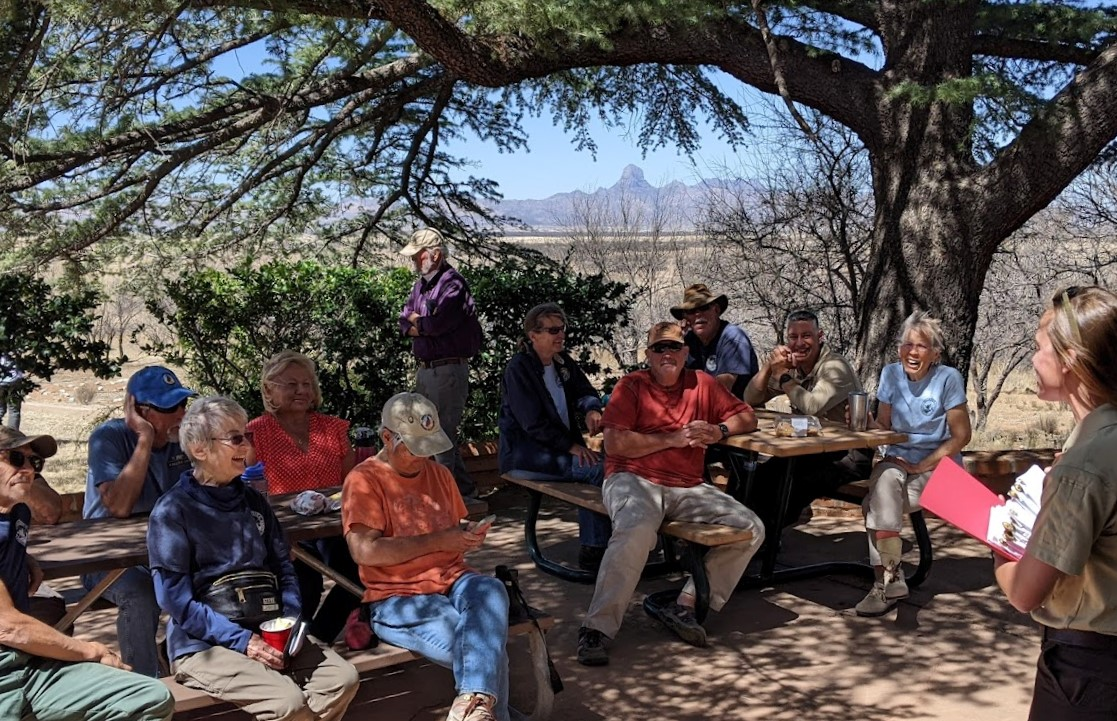
Restoring Habitat
Plenty of news on this topic! The Refuge hosted an intrepid group of workers from Wilderness Volunteers, a nonprofit organization dedicated to stewardship projects on America’s wild lands. In projects at Buenos Aires in November and March, these dedicated folks removed barbed wire and built erosion control structures. See the stories that follow!

Getting Rid of Barbed Wire
This is an ongoing project and we are on the home stretch! When Buenos Aires Ranch became Buenos Aires Refuge, hundreds of miles of barbed wire fence zigzagged across the refuge. Now, thanks to many years of volunteer effort, only ten to twenty miles of fence remain.
These fences are a hazard for deer and pronghorns, which can become entangled and die in these treacherous barriers. Pronghorns evolved in open spaces and do not instinctively jump an obstacle, preferring to try to go through or under the fences. Deer are vulnerable too.
A particularly hazardous area is along Arivaca Road, which bisects the refuge east and west. To get from the north or south half of the refuge to the other, animals have to jump two fences and also can get confused on the pavement in between. Recently the Refuge gave permission to remove wire along both sides of 8 miles of the 12-milestretch from highway 286 to Arivaca. Six long miles of this barrier were removed by Wilderness Volunteers and local and seasonal volunteers this winter!
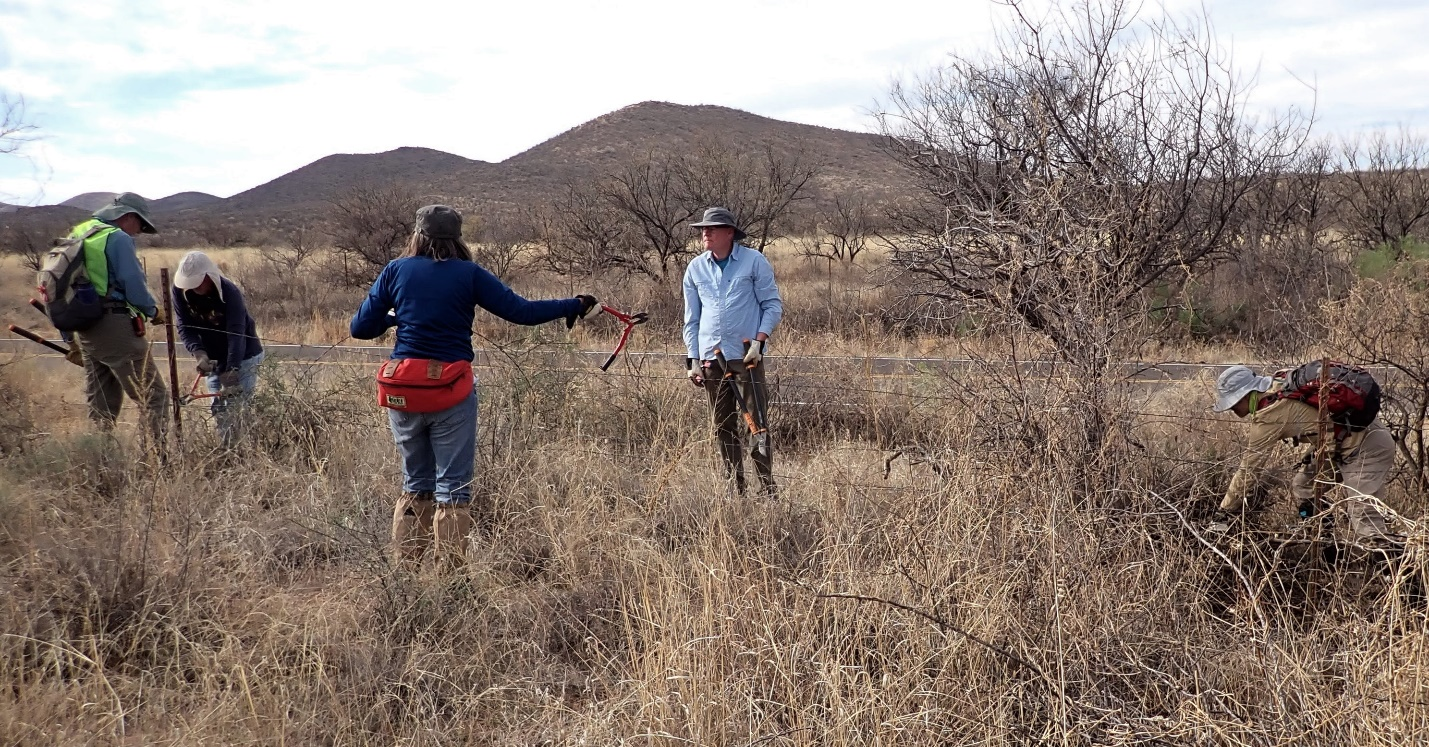
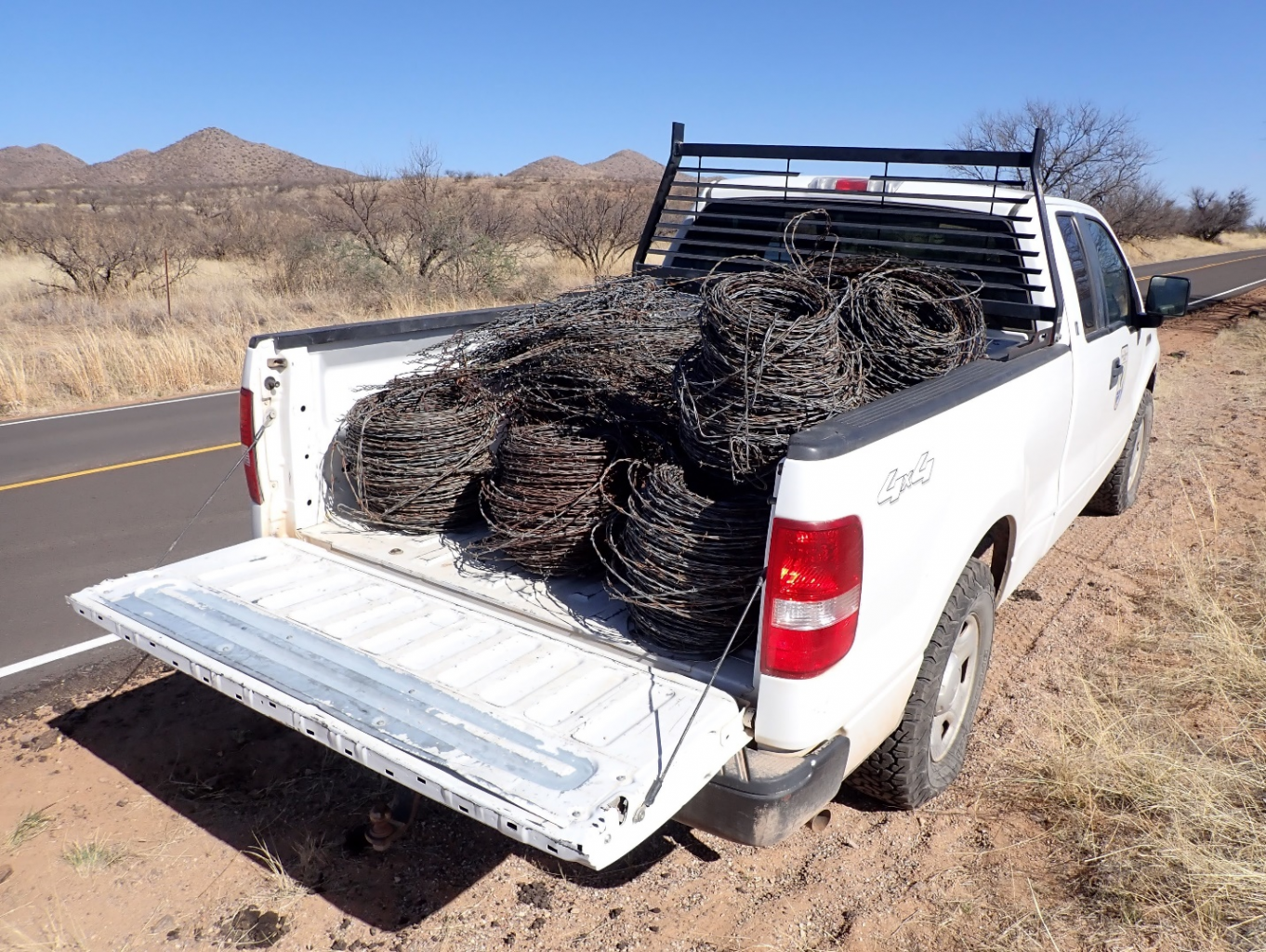
In a collaborative effort, several organizations are working together to remove fence in the northern end of the Altar Valley near Three Points. Seven groups were there on April 8th to finish the work a remaining after a 3-day period earlier this winter. Three Friends members joined folks from the Game & Fish Department, Friends of Ironwood National Monument, Arizona Wildlife Federation, Coalition for Sonoran Desert Protection and other groups. The wire winder that the Friends bought was put to use again, and 7 1/2 miles of barbed wire fence came down. There will be future projects in this effort, with a goal of opening up a corridor through the Altar Valley and the Avra Valley to the north.
The result will be restored, natural open spaces “where the deer and the antelope roam.”

Controlling Erosion
The refuge grasslands are subject to erosion now more than they were in presettlement times. Attempts to control this have involved large rock dams called gabions and smaller one-rock dams. Recently an enterprising person was hired under contract by the Friends of BANWR to supervise construction of a new kind of check dam – made of mesquite trees.
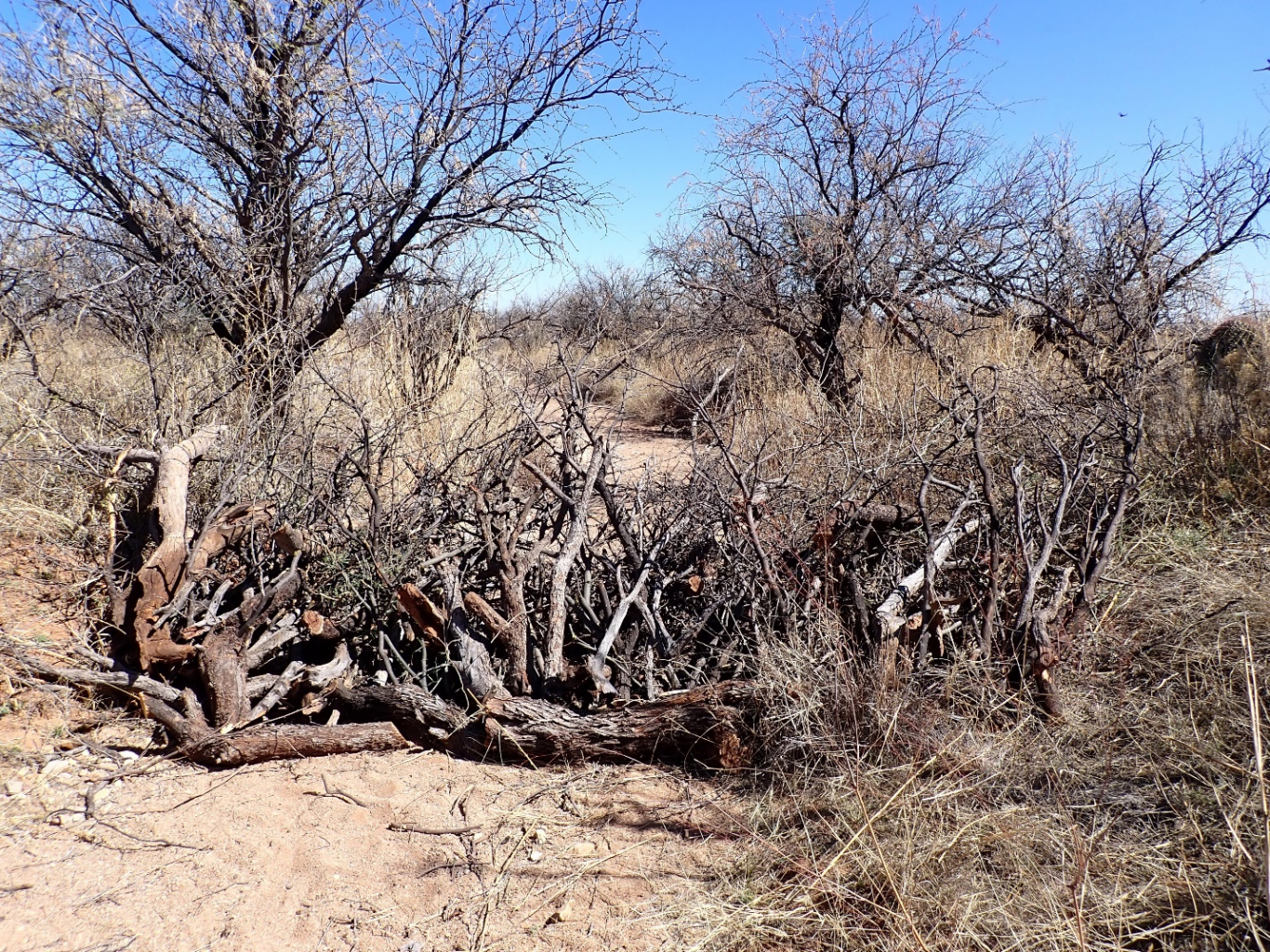
Kyle Thompson was hired and contracted by the Friends to design and install these erosion control devices, placing quite a few around the refuge headquarters area. They are particularly effective in controlling runoff that threatens to develop into an eroded channel. Seventeen mesquite dams were installed in March by Wilderness Volunteers, with Kyle coordinating. The first dams were put in several years ago and appear to be effective at erosion control. It is gratifying to see how our work is resulting in improved habitat!
The idea is to put the right size mesquite branches into the channel. Then, when rain comes, the branches slow down the water flow which causes the sediment to drop behind the dam. This sediment build up, provides a place for seeds to germinate and grow which is one more way to slow the water. In the best case, the sediment builds the wash back up to ground level and a variety of plants have established themselves in the channel.
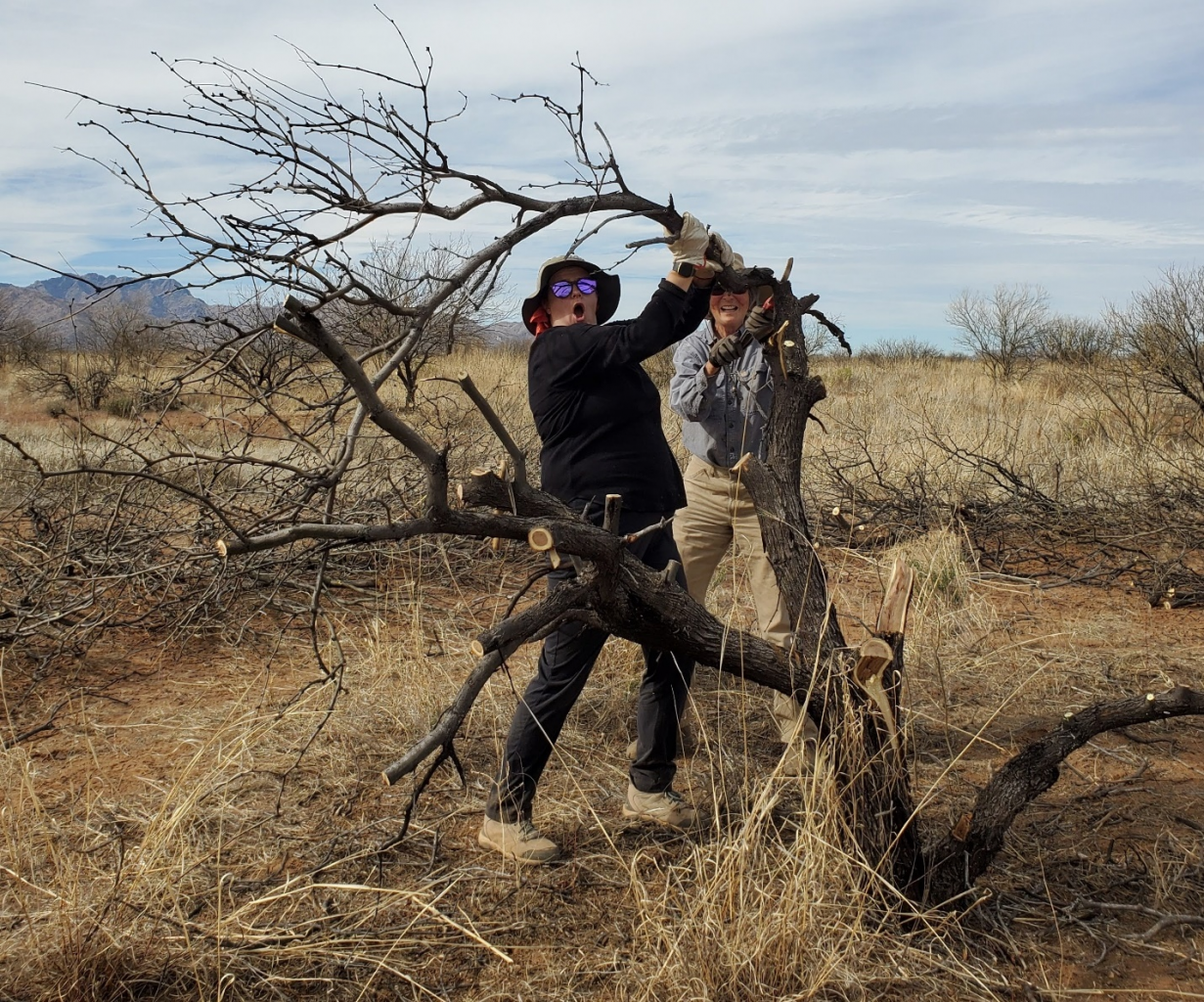
Field work can be fun!
The Cienega Boardwalk
Arivaca Cienega is a seasonal wetland where artesian flow sometimes brings water to the surface, creating semi-marshy conditions. Over the years the Cienega boardwalk has dried, splintered and rotted over many sections, and some handrail sections have collapsed. The condition precluded doing repairs so the old boardwalk was removed.
The Friends of Buenos Aires helped to coordinate up to six volunteers to join staff for three days this March in building 10’ sections of boardwalk to replace the ailing sections. 43 of these sections were built in the refuge carpentry shop. Refuge fire crew and maintenance staff moved them to the Cienega, where they are now installed. This shows what can happen when Friends members, refuge staff, and area volunteers all work together to benefit wildlife and wildlife viewing opportunities.
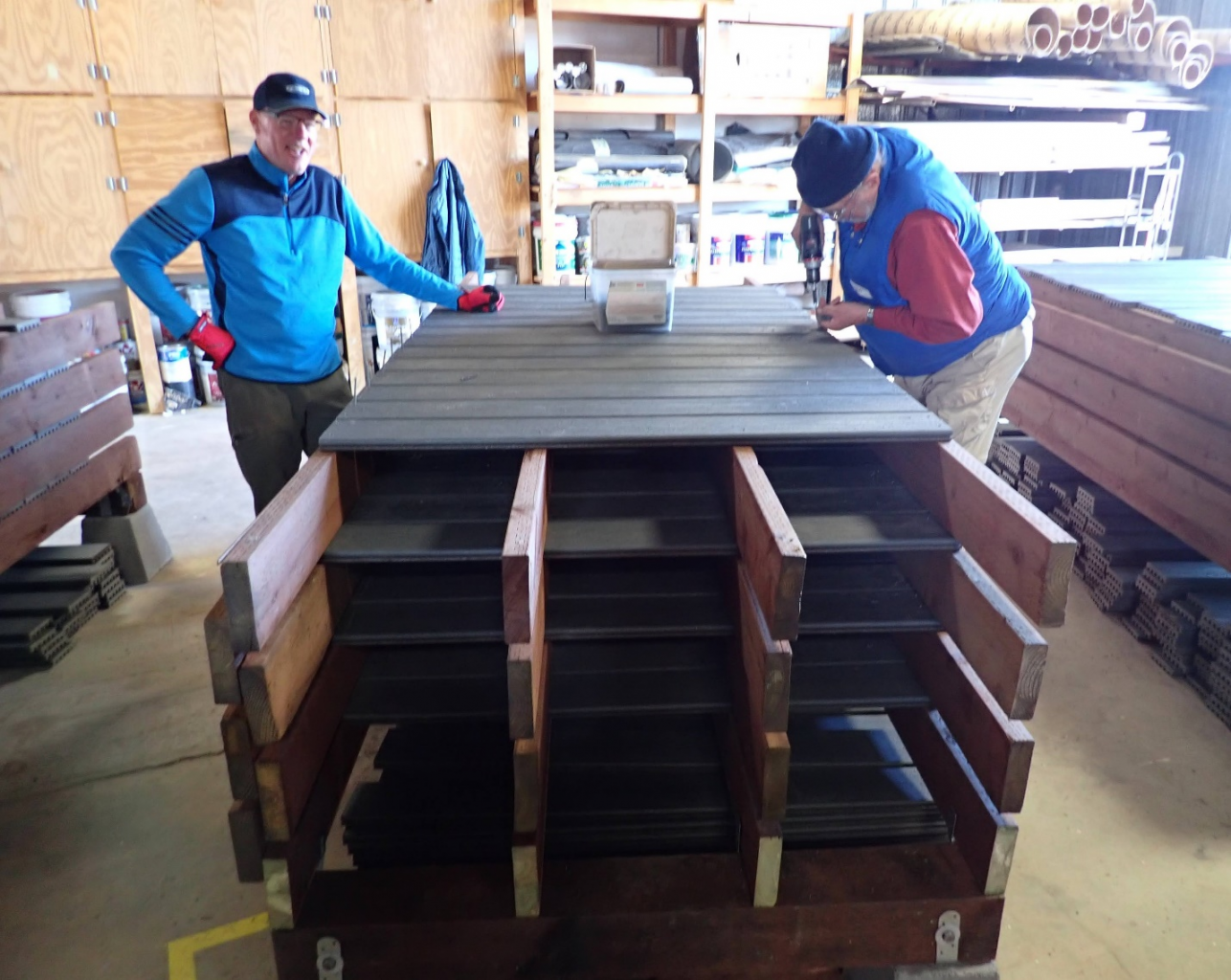
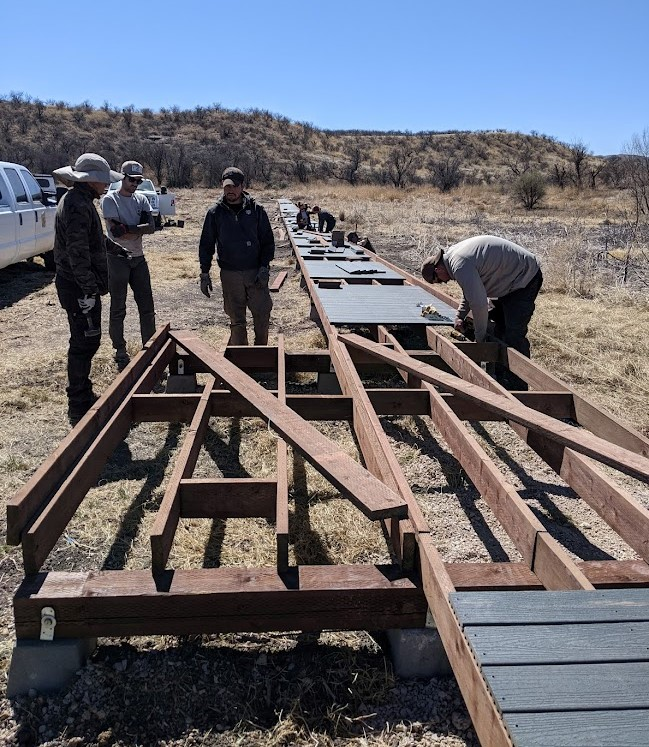
Water for Wildlife
The Friends applied for and received a grant from Arizona Sportsmen for Wildlife Conservation (AZSFWC) to help put water on the landscape for wildlife. AZSFWC provides funding for habitat projects, partially financed through the wildlife conservation license plate revenue (Wildlife Conservation Habitat Fund). The AZSFWC generously granted the majority of money for renovation of San Luis Well, and the Friends supplied the remainder.
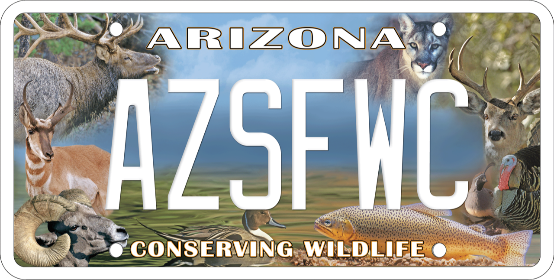
Arizona Sportsman for Wildlife Conservation provided the majority of the funds needed to complete the Lower San Luis Well. Purchase of wildlife conservation license plates supports this wildlife work. https://azmvdnow.gov/plates

San Luis Well is a solar-operated well. It was a 45’ hand dug well that no longer reached water. A couple of years ago, the refuge had the will drilled to 245’ and the capped wellhead sat waiting. To become functional, we needed a solar pump, solar panels, holding tank and other above-ground supplies. A combination of funds from AZSFWC, Friends and the Refuge hired a well contractor who purchased and installed everything. Future embellishments may include a small concrete trough to catch overflow, with feeder lines on the ground surface to wet the area and to provide water for wildlife. This opens up the possibility of irrigating and seeding native plants. Multiple outcomes in one project, and made possible through efforts of the Friends of Buenos Aires!
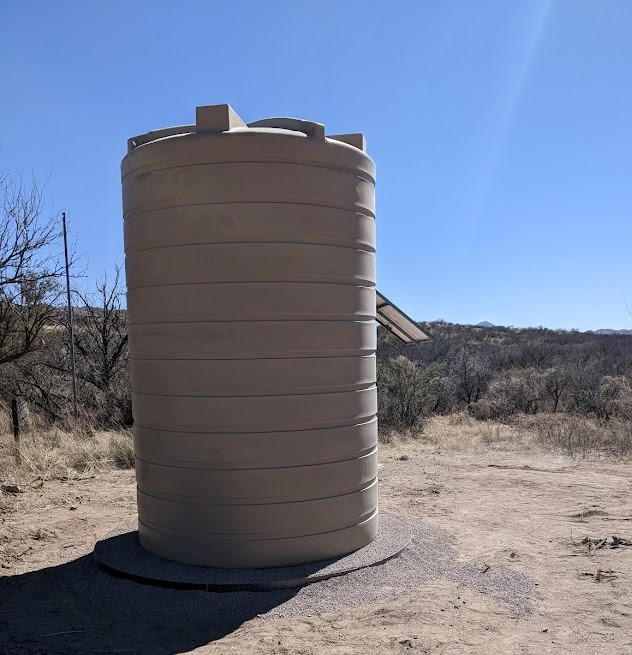
If you have not renewed your membership or joined Friends, here’s how you can do it. Joining the Friends is a great way to help wildlife and habitat!
Categories of membership are:
- Gila Monster $25
- Jackrabbit $50
- Jaguar $100
- Pronghorn $500
- Masked Bobwhite, lifetime membership $1000
To Join, just go to our Join/Renew/Donate page by clicking the button below.

Is the park safe as I have heard that drug cartels are in the park.
I apologize for the late reply. Yes, the park is safe. Drug cartels do not travel through the refuge. Immigrants and some drug carriers might but we do not have any issues or problems with them.